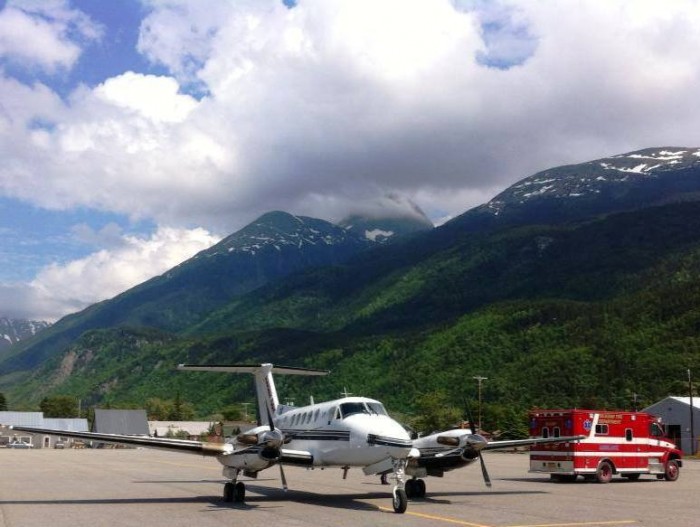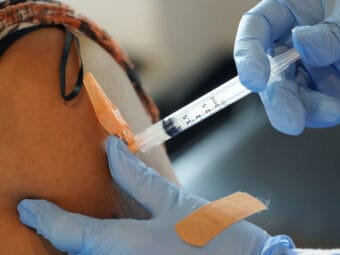
Fairbanks pediatrician Dr. Laura Brunner is used to working with colleagues around the state to find hospital beds for patients in rural areas who need higher levels of care.
They often arrive in Alaska’s urban hospitals on what’s known as a medevac flight — an expensive chartered plane staffed by nurses or medics. Typically, the patients won’t return to their home region until they are ready for discharge to a lower level of care and can take a commercial flight back.
But as COVID-19 puts unprecedented pressure on Anchorage’s hospitals and forces them into crisis standards of care, those medevac planes are now sometimes flying in the other direction: moving still-hospitalized but recovering patients from Anchorage back to rural hospitals.
The goal is making more room at the busy Anchorage hospitals, which offer more intensive care and other services for especially sick patients that the rural hospitals don’t.
This practice is known as load leveling, and it’s done more regularly between hospitals in urban areas where patients can be moved by ambulance. It’s far rarer in rural Alaska, though, because most hospitals in those areas aren’t connected by road and can be hundreds of miles apart.
“Once you start involving Learjets and medevac companies, it gets infinitely more complicated,” Brunner said in an interview Thursday.
The reverse medevac flights, from Anchorage hospitals to smaller ones in communities like Bethel and Fairbanks, are happening only rarely — perhaps once a day, according to state officials involved in the effort. They also are moving patients back toward their home regions rather than temporarily flying urban residents to rural hospitals.
But the fact that the flights are happening at all shows just how dire the coronavirus surge has been for Anchorage’s hospitals, where providers say that a crush of patients and shortage of staff are forcing difficult decisions about care.
Each flight can cost tens of thousands of dollars — $25,000 for a medevac from Anchorage to Fairbanks, for example.
Given the current demands on staffing and equipment at the Anchorage hospitals, that expense can still be worthwhile, according to Dr. David Scordino, who works on hospital capacity for the state health department.
“If we can shift some of those resources at one of the larger facilities from that patient by moving them to a different facility, then that frees up more nurses to potentially assist for the ICU-level patients,” he said in a phone interview.
The state health department has been convening daily huddles among the state’s hospitals, where representatives can share information about their needs and capacity, Scordino said.
“This is one part of building up capacity, and it’s definitely not a silver bullet by any means,” he said. “But it does help.”
Administrators and doctors at hospitals outside Anchorage said they’re keenly aware of the pressure on their urban peers. And even if rural hospitals are also short on staff and stretched by the pandemic, staff there understand that accepting a recovering patient might free up space in Anchorage if they need to transfer a sicker patient there for a higher level of care.
Brunner, the Fairbanks pediatrician, said she wants to make sure that the “smallest and sickest” children can get the intensive care only available at Anchorage hospitals.
“Part of that goal is: I will take the less acute patients back here, so that I can send you the ones that need to be there,” she said.
In the small Prince William Sound fishing town of Cordova, Dr. Hannah Sanders, the administrator of the 23-bed hospital, said her facility hasn’t taken transfers of patients from Anchorage that still need to be hospitalized.
But it is accepting discharged, recovering patients for skilled nursing and rehab slightly sooner and more often than usual, she added. Officials at rural hospitals are acutely aware of the demands on their peers in Anchorage, she said, and they’re doing what they can to reduce those demands and to avoid sending patients there unless there’s no alternative.
“We are absolutely paying attention to that,” she said, “and making sure that we help use the expertise that we have here locally to offload their burden.”



